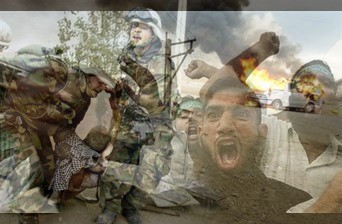Networking
From Baghdad's New Normal, by Alex Kingsbury:
"Violence has fallen by two important measures: attacks against American forces and sectarian murders of Iraqi civilians. In Baghdad's West Rasheed area, for example, murders fell from 553 in January 2007 to 20 in January 2008; attacks using improvised explosive devices (IEDs) fell from 178 in February 2007 to five last month. "Now it's time to win this, not just make it more stable," said Lt. Col. Pat Frank, commander of the 1-28 Infantry, moments after hearing the news of the al-Sadr cease-fire.
"One element that has changed in the past year is that many officers as junior as lieutenants and captains now have developed extensive networks of Iraqi informants, who provide tips about ieds and kidnappings. Capt. Brian Ducote of the 1-28 Infantry, whose combat outpost sits on a Shiite-Sunni fault line in the Dora neighborhood, has more than 400 Iraqi contacts in his cellphone (it rings frequently) and can converse in passable Arabic with his sources."








3 comments:
Fantastic. This is another wonderful use of your favorable statistics to show "progress". The war is far from contained. http://icasualties.org/oif/
As you can see, the casualties of US fighting men stayed at approximately 850 per year, save for last year where it broke the 900 man mark. This year, we're already showing 70 lost soldiers.
Don't applaud the fact that we have taken a city and fewer people die there. It discredits the losses suffered outside of that perimeter for the cause. None of those lives should be forgotten; so don't hide under what's happening in Baghdad.
VK
This just in:
http://news.bbc.co.uk/2/hi/middle_east/7282145.stm
Boom!
V
Pointing out a fresh attack does not further your argument. If you do not put the numbers in context (ie, over a period of time) to reveal a trend, then it would appear somewhat a moot point.
Gateway Pundit does a great job with the numbers here: http://gatewaypundit.blogspot.com/2008/03/tracking-iraq-what-media-did-not-tell.html
Post a Comment